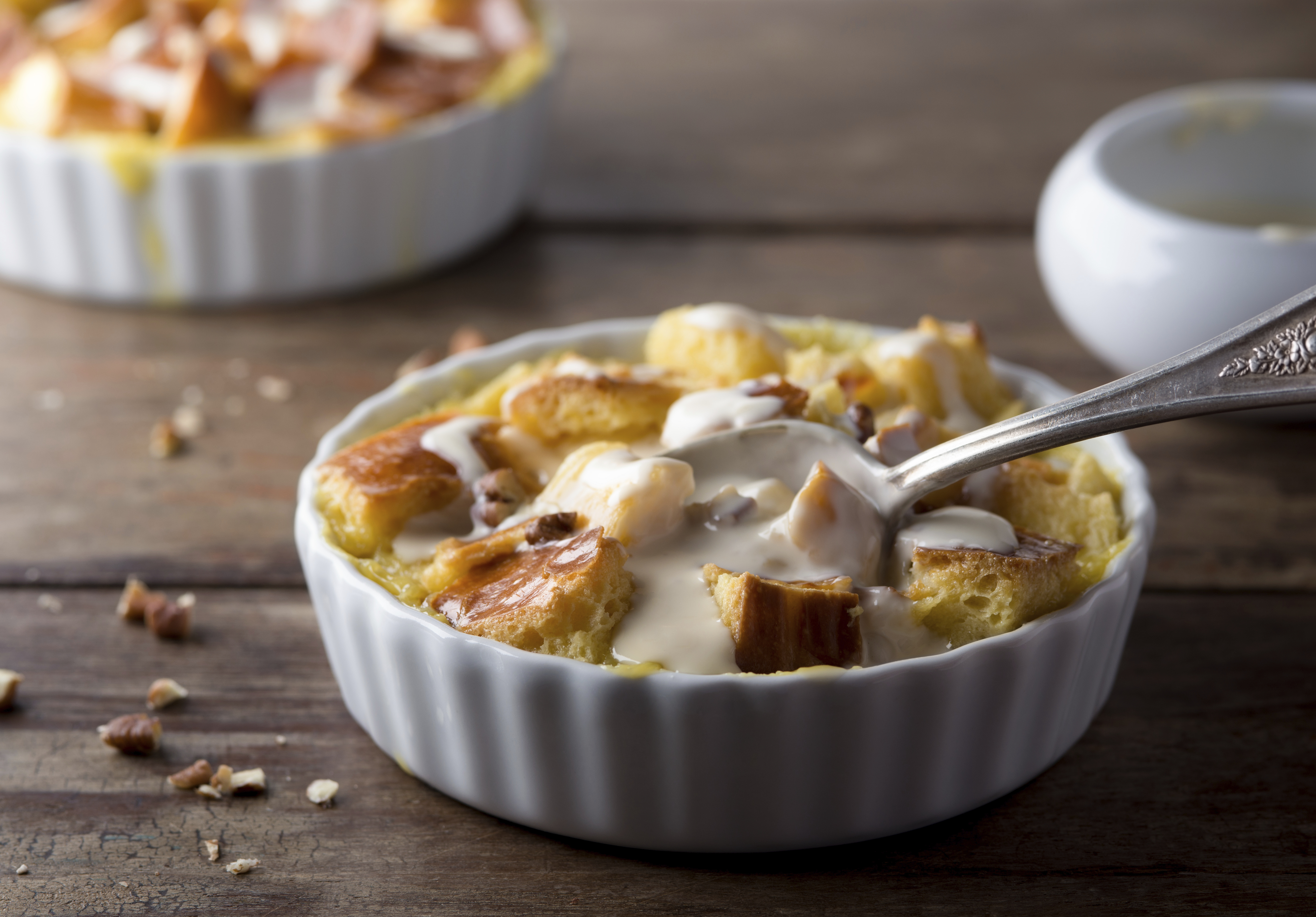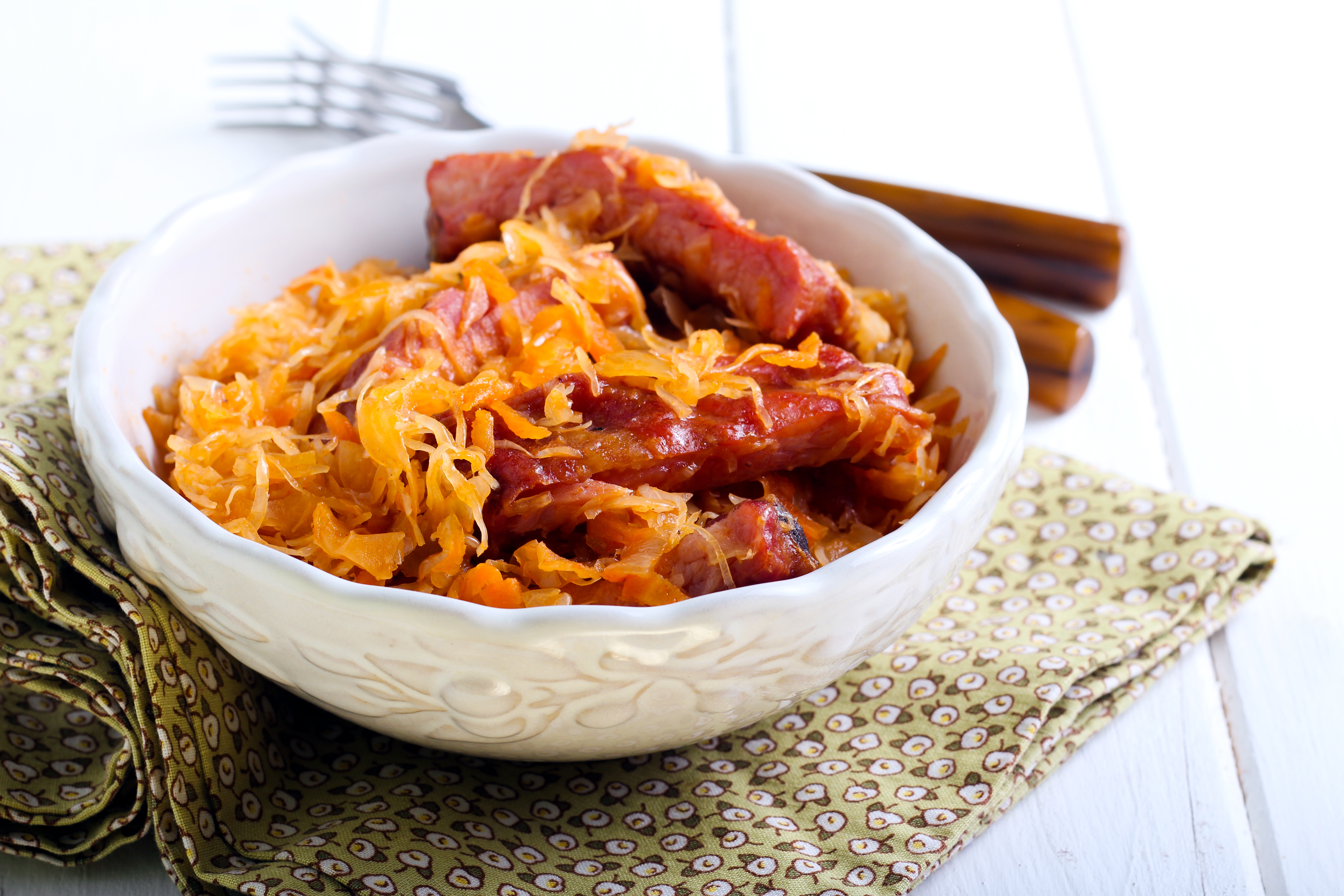In a line-up of muffins -- some homemade, some bakery-made, and some factory-made and vacuum-sealed in plastic bags -- it's not difficult to identify the usual suspects.
Bakery muffins have gently mounded tops -- chests puffed proudly, extending beyond the boundaries of their liners, not to be withheld by the confines that humbler muffins abide by. Homemade muffins are a flatter, shyer species. They're smaller and more compact and, because they don't live in fear of having their overflowing tops snatched, they're also less intimidating. Factory-produced muffins are something else entirely.
But some of us eat muffins only for the muffin top, and so we have to ask: How can we make tall, rotund bakery-style muffins at home? To answer this question, we turned to expert baker Zoe Nathan, whose book Huckleberry has us pointing at every picture and nodding at every recipe, mouths agape.
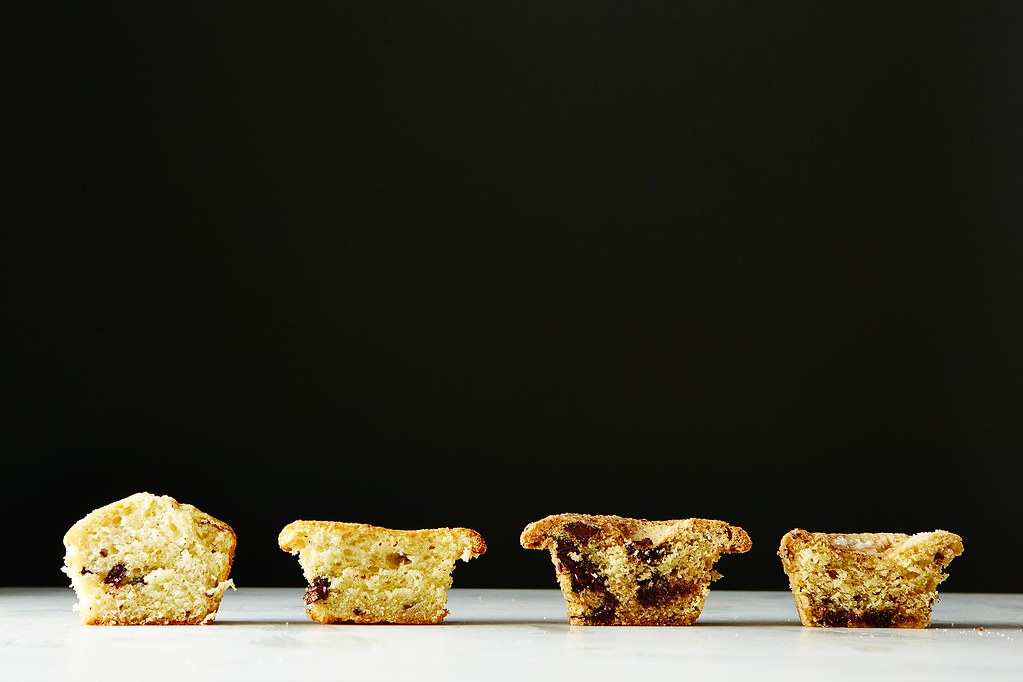
Zoe was skeptical. In compiling and testing the muffin recipes for her book, she found that recipes that yielded beautiful domes in Huckleberry Café's industrial convection ovens did not give the same results in home kitchens. Without an industrial convection oven, most muffins fall flat.
But we would not give up so easily. We decided to make Zoe's recipe for Chocolate Chunk Muffins and test out three different theories for achieving mounded muffins:
- Adding more flour. Zoe was confident that amping up the amount of flour in a standard muffin recipe would give home cooks domed muffins, but she warned that it might result in floury, dense muffins. The original recipe calls for 1 1/4 cups of all-purpose flour, so we upped the amount to 1 2/3 cups.
- Starting the muffins at a higher temperature for 5 to 8 minutes. Here, we applied the theory that a very hot initial oven temperature would cause the butter in the batter to release steam at a faster rate, thereby giving our muffins an early boost. We started them at 400° F, then lowered the temperature back to the standard 350° F after 5 minutes. While Zoe is a firm believer in baking at high temperatures, she was worried that this experiment might overcook the outsides and dry out the insides of the muffins.
- Using the convection setting on the standard oven in our test kitchen. The convection setting of the oven uses a fan to encourage even heat circulation. The thinking behind using a convection oven to create domes is simlar to the idea of starting the muffins at a high temperature: steam the butter early on. This technique that can make other baked goods loftier, too: Zoe told us that liquidy batters, like pumpkin bread, will "jump" in a convection oven, where they cook faster. Convection bake also does a better job to ensure that the insides and outsides of the muffins cook at an even rate, which means that the middle of the muffin should bake (and rise) along with the edges. To compensate for the more powerful baking on the convection setting, we lowered the temperature from the recommended 350° F to 325° F.
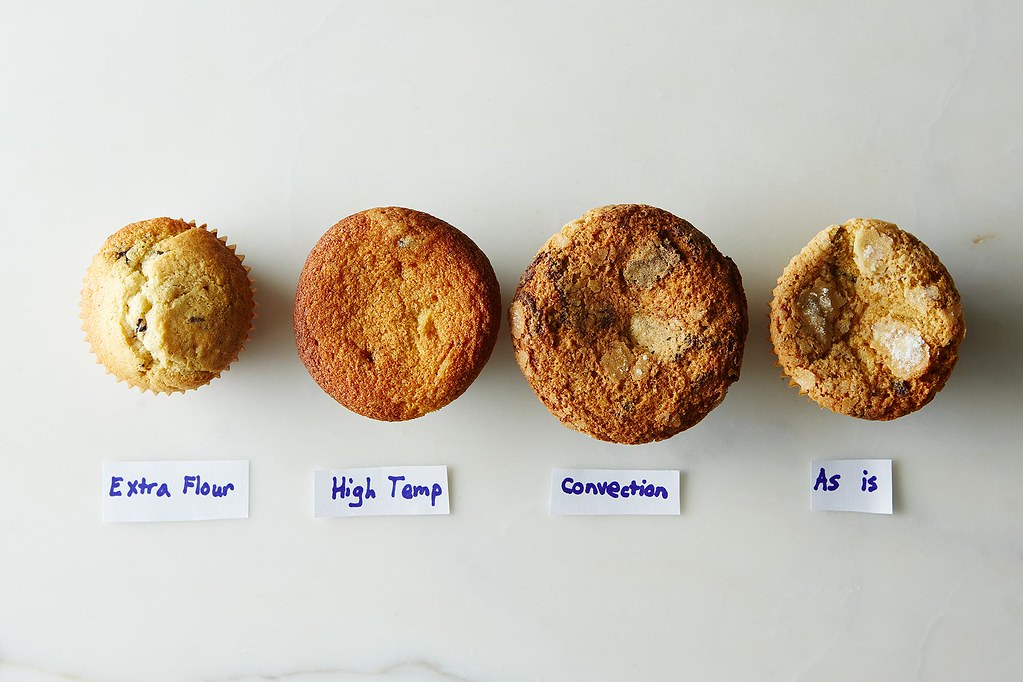
And here we go: The big reveal! Zoe was right (no surprise there): The muffin with the extra flour was the only one that rounded. It was definitely the cakiest of the bunch -- more floury than buttery, with a crumbier, dryer texture -- and tasted more like a purchased muffin than any of the others.
You can see that the high-temperature muffin developed a much deeper color. Its crunch was only surface deep -- it maintained a soft, buttery middle that a butter knife glided through easily.
The muffin we baked using the convection setting expanded outwards rather than upwards, stretching over the sides of the tin and encroaching into the space of its neighbors. (Below, we placed our four different batches of muffins in one tin for comparison's sake.) It was crunchier and firmer than any of its cousins.
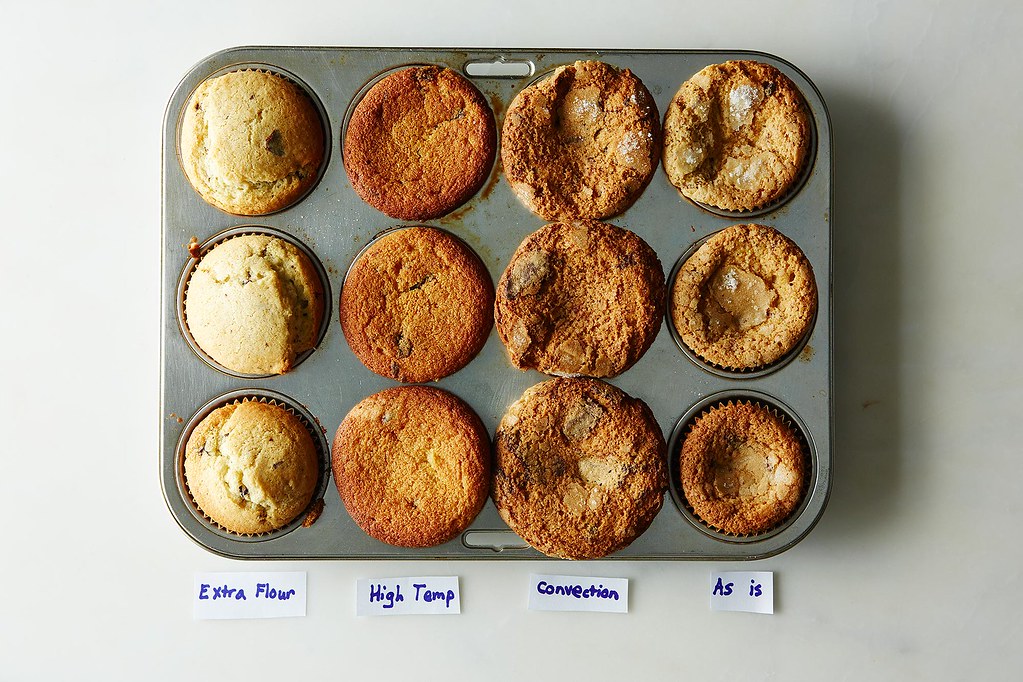
The original muffin was a staff favorite: light and buttery with just the right moisture level. Sure, it sank a little in the middle, but no one complained about it. Zoe herself doesn't understand the craze surrounding domed muffins and cupcakes. For cupcakes especially, Zoe believes that a dome would distrurb the ratio of frosting to cake and thus disturb the universe, as well.
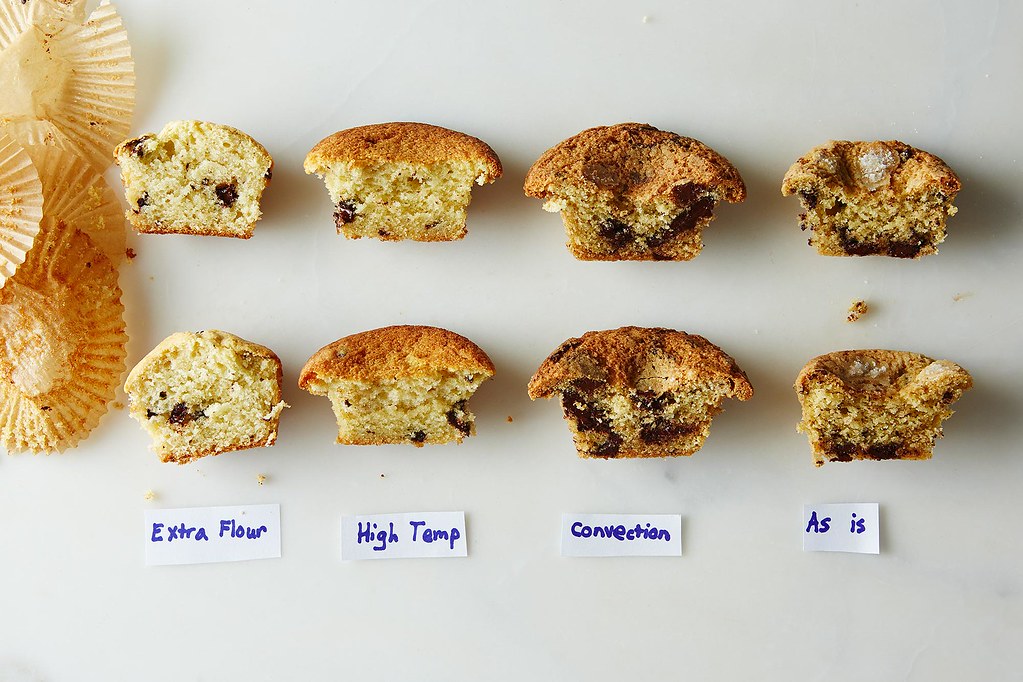
But if you dare disturb the universe -- if you just can't get the vision of muffin tops and perfectly-mounded cupcakes out of your head -- here are a few additional tips to try out:
- Make sure you're using fresh leaveners. Throw out baking soda and baking powder that's ineffective and long-expired.
- Use a folding motion, rather than a mixing motion, to combine the wet and dry ingredients -- you want your batter to be as light as possible.
- Do not open the oven until the cupcakes are nearly done, as you'll risk lowering the temperature and introducing an airy breeze.
- Go with a light and airy recipe. Some have found that dense muffins loaded with heavy add-ins are less likely to dome.
Photos by Mark Weinberg
This article was written by Sarah Jampel from Food52 and was legally licensed through the NewsCred publisher network.




